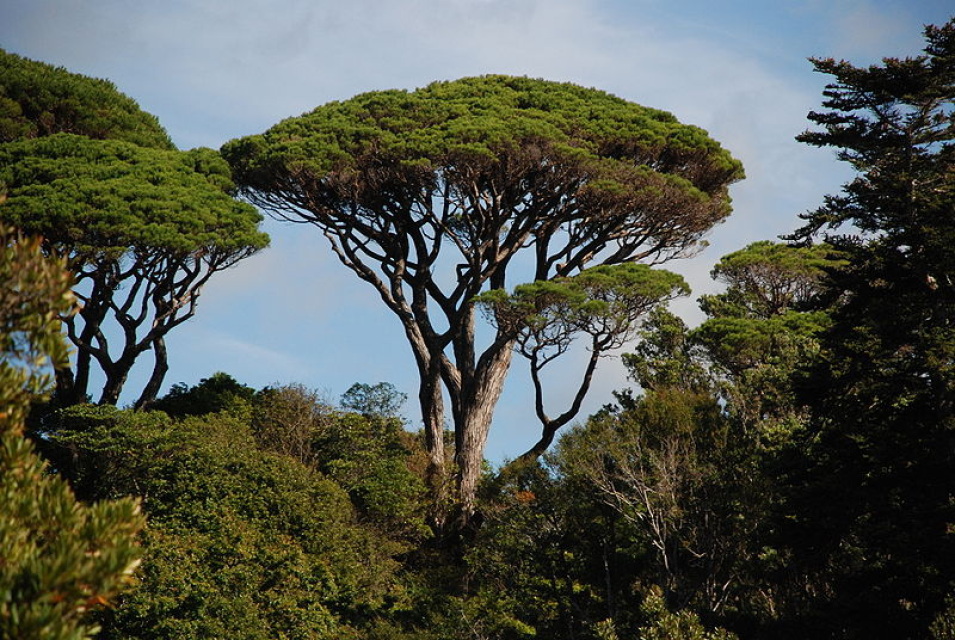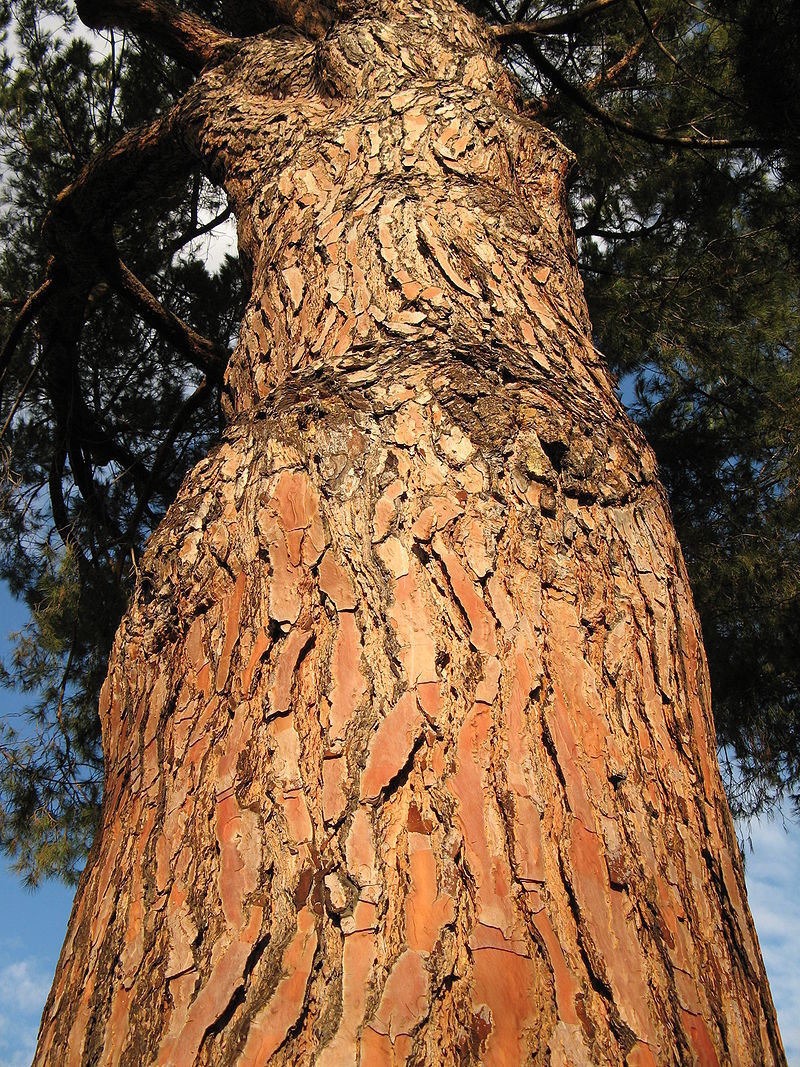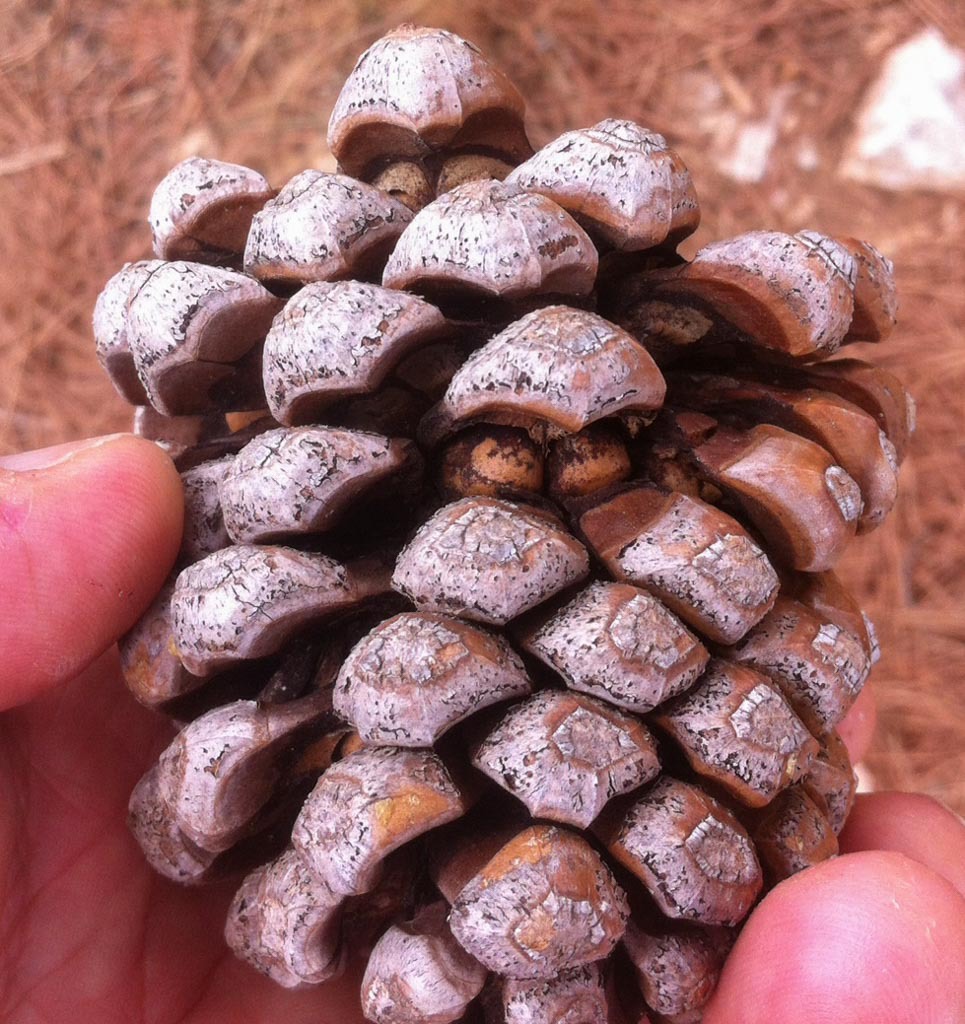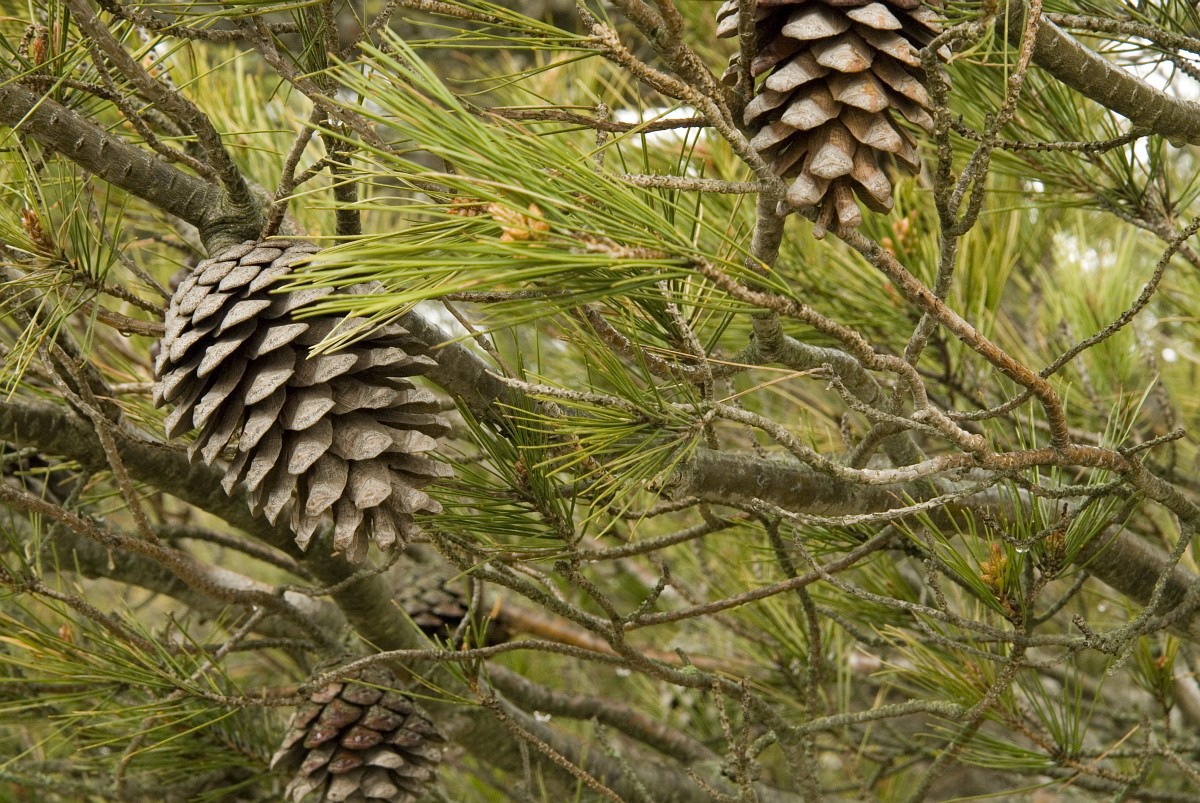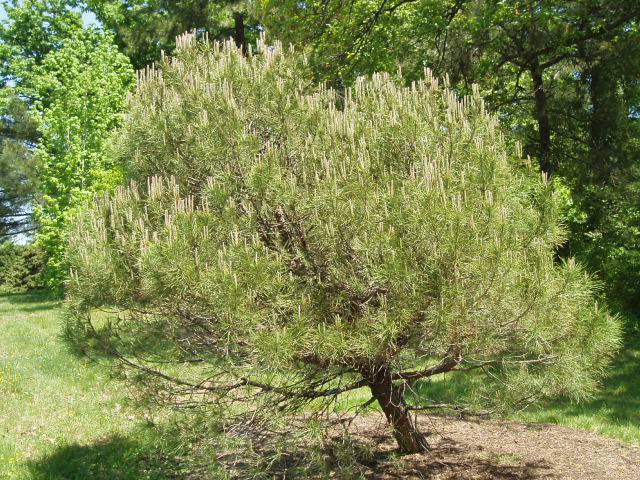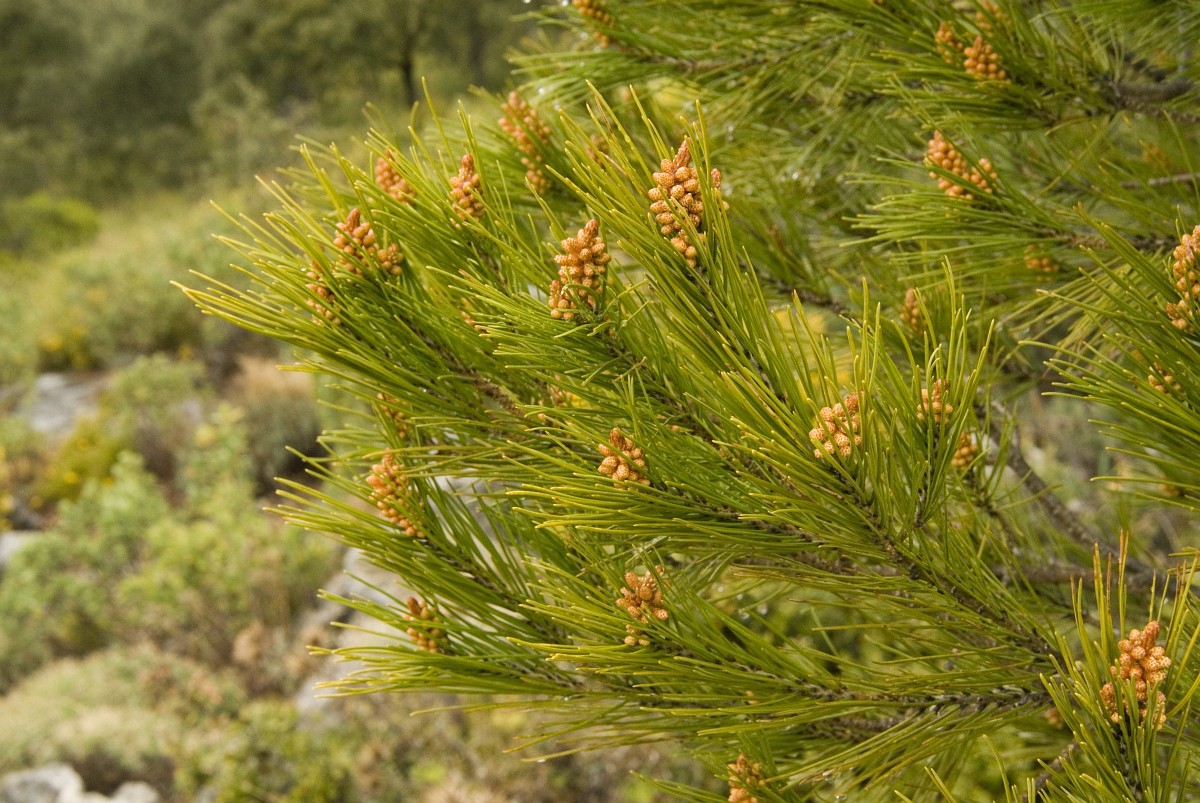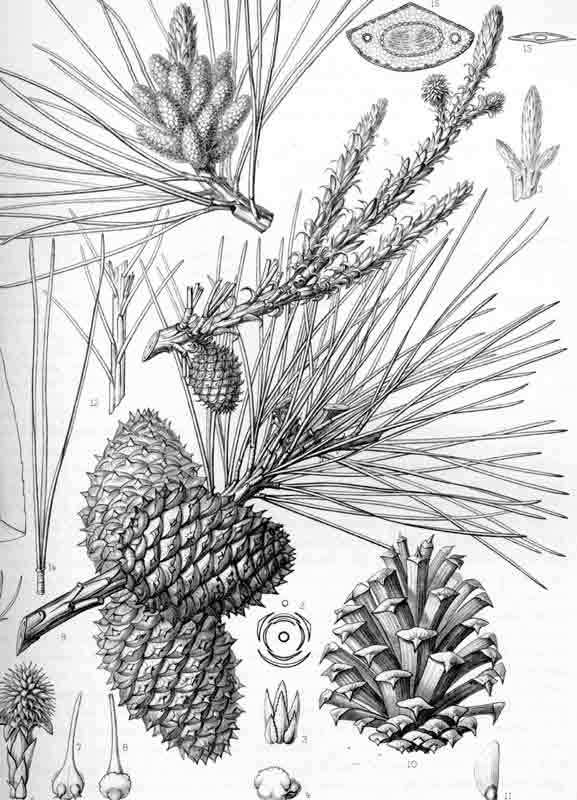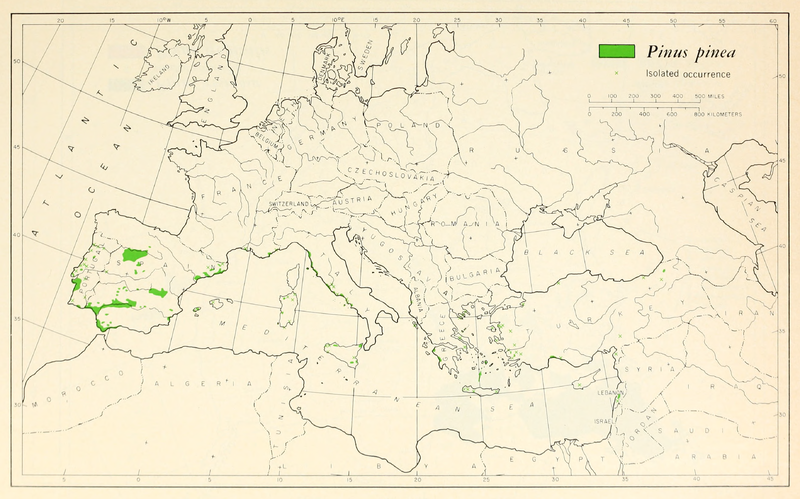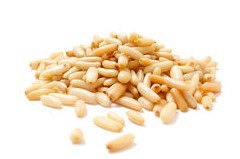subgenus Pinus, section Pinus, subsection Pinaster (Mayr ex Koehne).
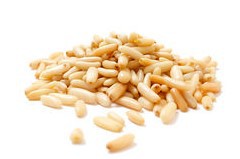
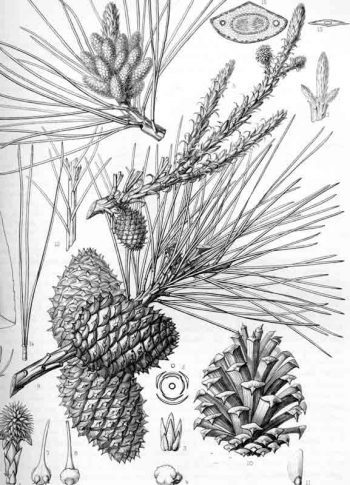
Pinus pinea, first described in 1753 by Carolus Linnaeus (1707-1778), is commonly known as Italian stone pine, stone pine, Mediterranean stone pine, umbrella pine; as well as Pinheiro manso in the Portuguese language; as pino piñonero, pino manso, pino doncel, pino albar in Spanish; pin parasol, pin pignon in French; as pi pinyer, pi pinyoner, pi para-sol, pi bo, pi ver in Catalan; Pinu granatu in Corsican; pino domestico in Italian; κουκουναÏιά in Greek; pinija in Serbian; as Fıstık çamı Turkish; ×ורן ×”×¦× ×•×‘×¨ in Hebrew; as well as صنوبر ثمريin Arabic. This tree is famous for its production of large, oily seeds, loved world-wide as pine nuts, or pinea in the Latin language, hence the species name.
Ethnobotany. This conifer has been cultivated extensively for at least 6,000 years for its edible pine nuts, which have been trade items since early historic times. The tree has been cultivated throughout the Mediterranean region for so long that it has naturalized, and is often considered native beyond its natural range.
Small specimens are used for Bonsai, and also grown in large pots and planters. The year-old seedlings in juvenile foliage stage are seasonally available as 8 to 12 inch (20 - 30 cm) tall table-top Christmas trees.
Other products of economic value include resin, bark for tannin extraction, and empty pine cone shells for fuel. Pinus pinea is also currently widely cultivated around the Mediterranean for environmental protection such as consolidation of coastal dunes, soil conservation and protection of coastal agricultural crops.
Description. Italian stone pine is an evergreen coniferous species of tree that grows to mature heights of 40 to 80 feet (12 - 25 m) with an often short and commonly slightly sinuous trunk. The crown of a mature tree highly distinctive with a shape shared only by P. nelsonii of northeastern Mexico, globose and shrubby when young, later domed and becoming very broad, low-rounded with age; not conic except in first two years from seed.
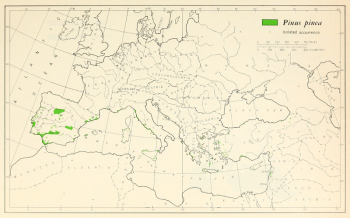
Distribution. Prior to the anthropogenic range expansions of the last few thousand years stone pine was probably confined to the Iberian Peninsula, the only area where it is found away from ancient trade routes. It is said to be "impossible to determine its natural range." The species is an archaeophyte (unrecorded introductions by early man) throughout the Mediterranean, and more recently has been naturalized in South Africa - Cape province and in other regions with Mediterranean climates, such as California. Among other places, it occurs in Croatia, Italy and Spain.
P. pinea thrives in coastal sandy areas with moist but well-drained soils and little temperature variation. It is sensitive to environmental disturbance and difficult to regenerate.
Hardy to USDA Zone 8 - cold hardiness limit between 10° and 20°F (-12.1° and -6.7°C).
